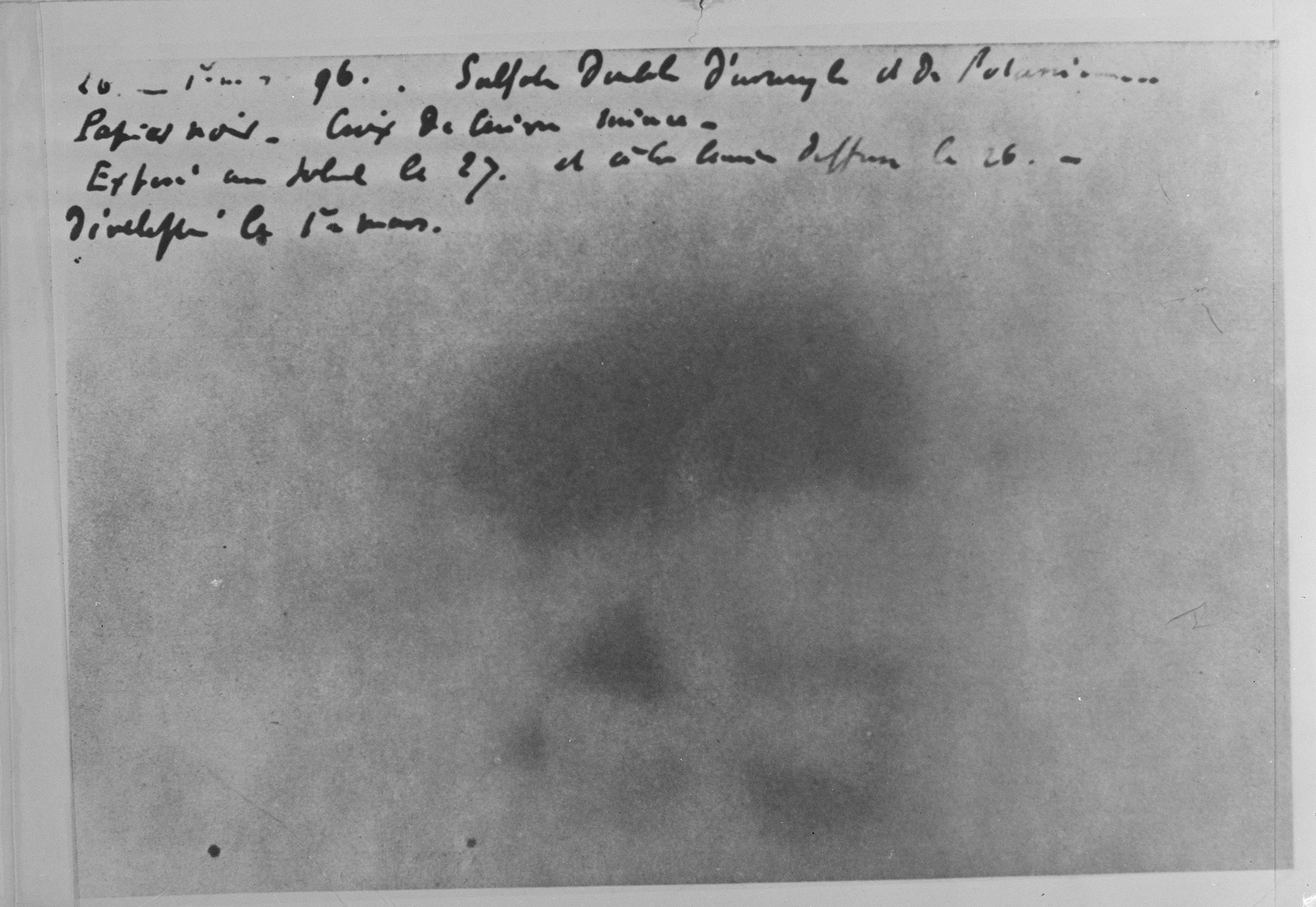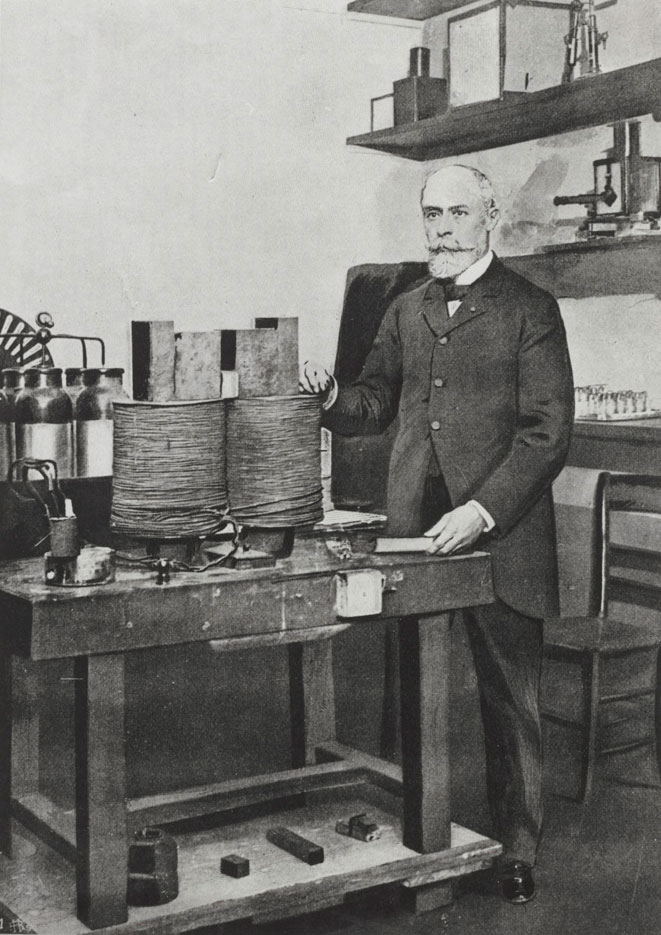
Some, including Becquerel, believed that phosphorescence might be related to the strange invisible rays that Wilhelm Röntgen had discovered. In his laboratory at the National Museum of Natural History in Paris, he studied images left on photographic plates by uranium salts that had previously been exposed to sunlight. The scientist described his approach in a note in the records of the French Academy of Sciences:1

One wraps a Lumière photographic plate with a bromide emulsion in two sheets of very thick black paper, such that the plate does not become clouded upon being exposed to the sun for a day. One places on the sheet of paper, on the outside, a slab of the phosphorescent substance, and one exposes the whole to the sun for several hours. When one then develops the photographic plate, one recognizes that the silhouette of the phosphorescent substance appears in black on the negative. 2
A small twist of fate disrupted Becquerel’s experiments, creating the opportunity for a discovery that was to have a profound impact on physics: in February 1896, the sun remained hidden behind the clouds for several days in a row in Paris, making his experiments impossible. Becquerel himself described this incident in a note in the records of the French Academy of Sciences:
Among the preceding experiments, some had been prepared on Wednesday the 26th and Thursday the 27th of February, and since the sun was out only intermittently on these days, I kept the apparatuses prepared and returned the cases to the darkness of a bureau drawer, leaving in place the crusts of the uranium salt. Since the sun did not come out in the following days, I developed the photographic plates on the 1st of March, expecting to find the images very weak. Instead, the silhouettes appeared with great intensity. 3
Becquerel thus discovered only by chance that even without sunlight exposure, and therefore even when it does not emit light via phosphorescence, uranium could create an image on photographic plates. Among the images he obtained in this new series of experiments is that of the famous Maltese cross that Becquerel placed between the photographic plate and the uranium salts.
In a lucky turn of events, Becquerel developed the photographic plates. Did he do it out of curiosity? Or on a hunch?
Becquerel soon demonstrated that an image had been left on the plates by an invisible radiation that the uranium emitted at all times, independent of the phenomenon of phosphorescence. This invisible radiation is similar in some ways to X-rays, with one key difference: it is emitted by uranium spontaneously, without the need for any external energy source. The scientist called this new phenomenon uranium radiation.
1All of the notes Henri Becquerel published in the records of the French Academy of Sciences (in French only) may be viewed on the institution’s website: http://www.academie-sciences.fr/pdf/dossiers/Becquerel/Becquerel_publi.htm
2Henri Becquerel, C.R.A.S. T122 (1896) p. 420-421.
3Henri Becquerel, C.R.A.S. T122 (1896) p. 501-503.















